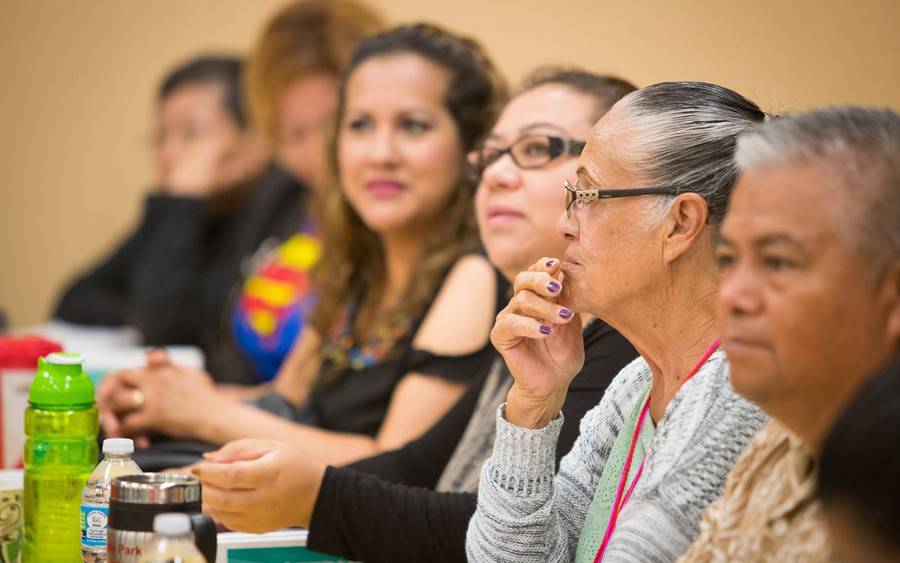Scripps Invests $395 Million into Community Benefits In the Region
Programs reflect Scripps’ deep commitment to community service

Programs reflect Scripps’ deep commitment to community service
Scripps Health invested $395 million into community benefit programs in San Diego County during fiscal year 2018, which accounted for 12 percent of the nonprofit health system’s total operating expenses.
Scripps recently released its 2019 Community Benefit Report detailing its community benefit activities for fiscal year 2018 (October 2017 through September 2018). A copy of the report, which includes data on each of Scripps’ hospitals, is available online at www.scripps.org/communitybenefit.
Scripps cares for some of the neediest people in San Diego County, often at low or no cost. In fiscal year 2018, Scripps provided hospital services to approximately one-quarter of the county’s uninsured patient population.
Scripps also invested in training new physicians, health screenings for underserved populations and care for homeless people. In addition, Scripps worked to meet other important community needs through its network of hospitals and clinics across the region.
“Scripps Health’s investment in our growing community began more than 100 years ago as the mission of our founders, Ellen Browning Scripps and Mother Mary Michael Cummings,” said Chris Van Gorder, president and CEO of Scripps Health. “I think both of them would be proud to see that their commitment to improving the health of San Diegans continues stronger than ever today.”
Community benefit services
Scripps divides community benefit services into three categories: uncompensated health care, community health improvement services, and professional education and health research.
Uncompensated care accounted for the largest portion of Scripps’ community benefit efforts at $358.3 million in fiscal 2018.
Uncompensated care included:
- $331.7 million in under-reimbursed care (underpayment from Medi-Cal, Medicare and other government programs)
- $20.2 million in charity care (for people without insurance who did not qualify for government assistance). Scripps Mercy Hospital’s campuses in San Diego and Chula Vista accounted for 64 percent of Scripps’ charity care.
- $6.3 million in bad debt (failure to pay by patients whose health care was not classified as charity care)
Scripps invested $10.3 million into community health services, including:
- $5.3 million for community health improvement services, and cash and in-kind contributions in support of prevention and wellness programs such as cardiac screenings, diabetes education, cancer support groups and health and wellness events
- $3.8 million in subsidized health services
- $1.1 million in support of community building activities
Scripps invested $26.7 million in health research, graduate medical education and professional education including:
- $16.1 million for graduate medical education programs at Scripps Green Hospital, Scripps Mercy Hospital and the Scripps Family Medicine Residency Program
- $8.8 million for professional education programs which includes helping students explore health care careers, nursing development and other health care professional education
- $1.8 million for health research, primarily at Scripps Clinical Research Services and Scripps Whittier Diabetes Institute.
Scripps employees and affiliated physicians collectively volunteered 10,191 hours in support of Scripps-sponsored community benefit programs, the equivalent of more than $507,000 in volunteer labor. (Volunteer hours are mentioned in the report but are not included in the community benefit total.)
Prioritizing community health needs
Scripps collaborates with other health systems, community groups, government agencies, businesses and grassroots organizations to serve the greatest patient population needs and to prioritize investments in the health and well-being of the community.
The 2019 Community Benefit Report is the system’s annual response to Senate Bill 697, a 1994 state law that requires private, nonprofit hospitals to document the full range of community benefits they provide on a yearly basis. Scripps takes this legislative requirement a step further by incorporating community benefit activities from throughout the system, including Scripps’ five acute-care hospital campuses and its various outpatient and wellness center locations.
Learn more about Scripps Health, a nonprofit integrated health system in San Diego, Calif.
Media Contact
- Keith Darce
- 858-678-7121
- darce.keith@scrippshealth.org